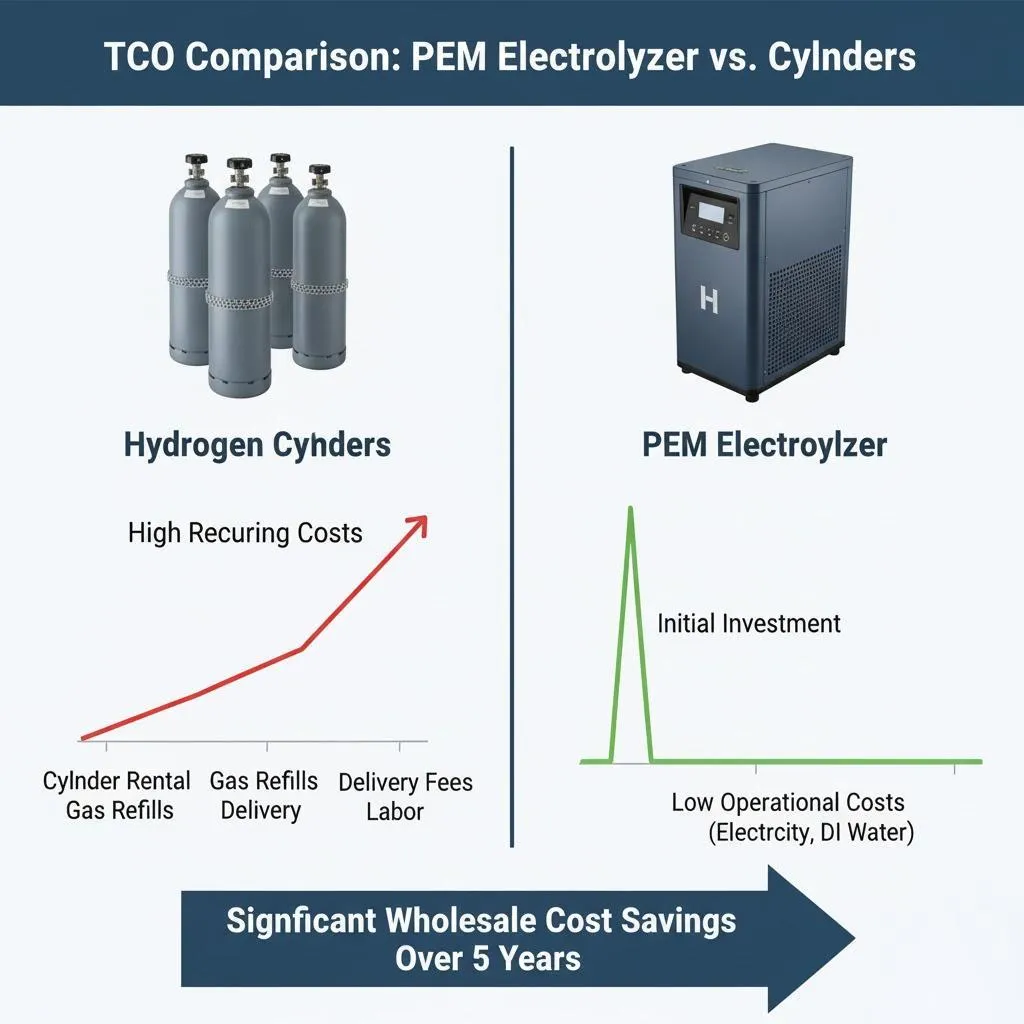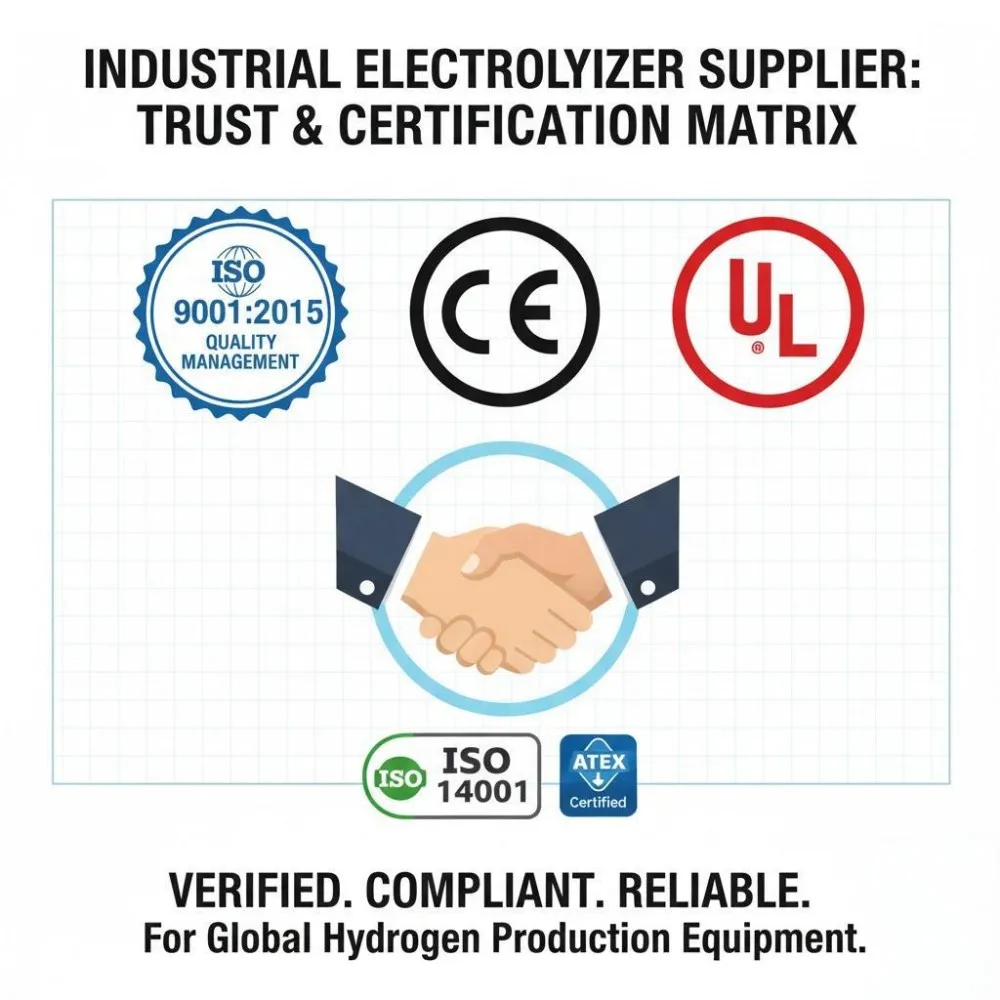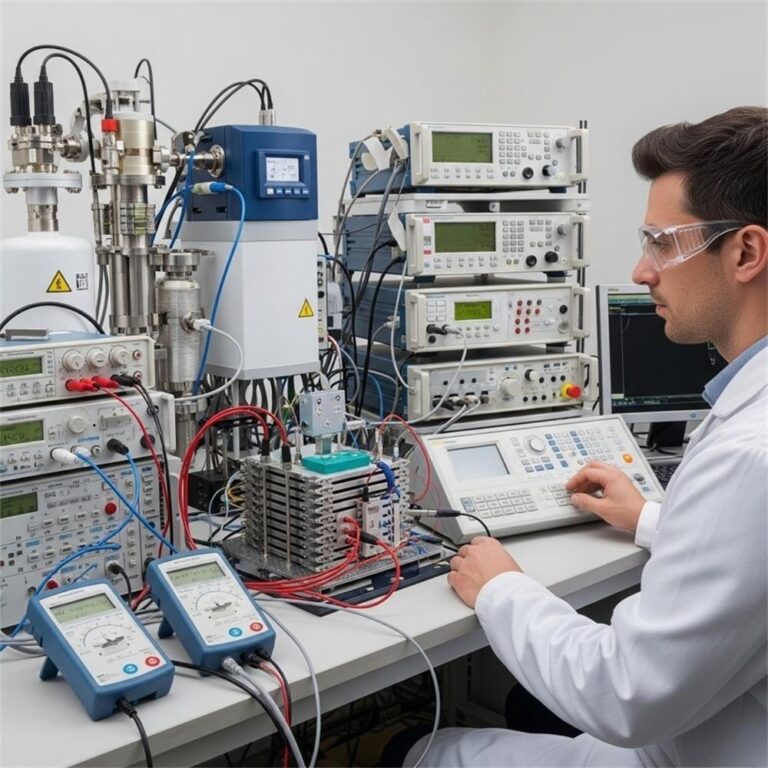Introduction
As the global energy landscape shifts rapidly towards sustainability, hydrogen has emerged as a cornerstone of the clean energy revolution. But how can we produce hydrogen in a way that’s not just clean—but also efficient, scalable, and cost-effective?
Enter the free energy generator model, where freely available renewable resources such as sunlight, wind, and hydropower are leveraged to power Proton Exchange Membrane (PEM) water electrolyzers. These systems break water into hydrogen and oxygen with remarkable efficiency, ushering in a new era of green hydrogen production.
At the heart of this technological advancement lies the promise of creating a reliable, renewable, and resilient hydrogen infrastructure. This article explores the synergy between PEM electrolyzers and renewable energy integration, illustrating how this powerful combination is setting the foundation for a sustainable energy future.

Understanding Free Energy Concepts in Renewable Hydrogen Production
Debunking Misconceptions About “Free Energy”
The term “free energy generator” often evokes images of perpetual motion machines and fringe science. However, in the context of green hydrogen, it represents a completely different idea—using naturally available energy sources that are “free” in terms of fuel cost, such as solar, wind, and hydroelectric power.
These sources are not only abundant but also crucial for decarbonizing the hydrogen supply chain.
The Significance of Renewable Energy Sources
Using fossil fuels to produce hydrogen defeats the purpose of a clean energy shift. Renewable-powered hydrogen production—especially via PEM electrolysis—ensures minimal carbon emissions, maximum energy efficiency, and long-term sustainability. It’s not just about cleaner air, but also about energy independence, national security, and global climate goals.
PEM Water Electrolysis: A Key Technology for Green Hydrogen
What is PEM Water Electrolysis?
PEM (Proton Exchange Membrane) water electrolysis involves splitting water (H₂O) into hydrogen (H₂) and oxygen (O₂) using electricity. A PEM electrolyzer contains a solid polymer electrolyte that conducts protons from the anode to the cathode and separates gases to ensure purity.
Advantages of PEM Technology
- High Efficiency: Converts electricity to hydrogen at over 70% efficiency.
- Fast Response Time: Can ramp up or down quickly to match renewable energy input.
- Compact Design: Ideal for modular setups and space-constrained installations.
- Clean Operation: Produces zero greenhouse gas emissions during operation.
Technical Specifications and Performance Metrics
PEM electrolyzers generally operate at:
- Current Density: ~1–2 A/cm²
- Voltage Range: 1.8–2.2 V
- Hydrogen Purity: Up to 99.999%
- Efficiency: 60–80% depending on conditions
These parameters make PEM ideal for coupling with intermittent renewable energy sources like solar and wind.
System Design Considerations for Integrated PEM Electrolyzer Systems
Renewable Energy Source Integration
Solar Power
Solar PV systems are an attractive choice for PEM electrolyzer integration. They require DC-DC converters or inverters to ensure compatibility, along with energy storage solutions to maintain 24/7 operation. The intermittent nature of sunlight makes smart energy management essential.
Wind Power
Wind energy offers high capacity and consistency in certain regions. Integration challenges include handling variable output and managing grid connections. Wind-to-hydrogen systems often include buffers or battery systems to maintain stable electrolyzer input.
Hydroelectric Power
Hydropower provides a continuous and stable electricity source—making it ideal for base-load hydrogen generation. PEM systems can be directly connected to hydroelectric grids with minimal need for energy buffering.
Energy Storage Solutions
Batteries
Lithium-ion or flow batteries help stabilize energy supply and reduce downtime during fluctuations in renewable input. This is critical for the longevity of PEM systems.
Hydrogen Storage
Produced hydrogen can be stored in:
- Compressed Gas Tanks: Up to 700 bar
- Liquid Hydrogen Vessels: Requires cryogenic temperatures
- Metal Hydrides: Chemically bonded hydrogen with high energy density
System Optimization and Control
Advanced control systems monitor energy inputs, hydrogen output, and system health. These include:
- AI-based predictive controls
- SCADA systems for remote monitoring
- Automated fault detection and diagnostics
Together, these ensure maximum uptime and operational efficiency for free energy generator systems.
Case Studies: Successful Implementations of Free Energy Hydrogen Generators
Project 1: Solar-Hydrogen Farm in California
This project uses 1.2 MW of solar PV to power a 500 kW PEM electrolyzer. The hydrogen fuels municipal buses, reducing carbon emissions by over 300 tons annually.
Project 2: Wind-to-Hydrogen in Denmark
In a coastal town, wind turbines feed directly into a PEM-based hydrogen station. The hydrogen is compressed and used in local industrial processes, providing a fossil-free alternative.
Project 3: Hydropower Integration in Norway
Norway’s abundant hydro resources support a 2 MW PEM plant producing green hydrogen for export. This model proves the feasibility of 24/7 renewable hydrogen generation.
These real-world examples show that free energy generators using PEM technology are not just theoretical—they’re already making an impact globally.
Policy and Regulatory Landscape for Green Hydrogen
Government Incentives and Subsidies
Countries like Germany, the U.S., and Japan offer subsidies for electrolyzer installations, tax credits for hydrogen fuel use, and R&D grants.
Regulations and Standards
PEM systems must adhere to:
- ISO 14687 for hydrogen fuel quality
- IEC 62282 for safety and performance
- Local grid and energy storage regulations
International Collaboration
Initiatives like the Hydrogen Council and Mission Innovation promote knowledge-sharing, standardization, and infrastructure development across borders.
Future Projections and Innovations in PEM Electrolyzer Technology
Cost Reduction Strategies
Innovations in catalyst materials (like replacing platinum with cheaper alternatives) and economies of scale are driving down costs rapidly.
Performance Improvements
Next-gen PEM systems are pushing efficiency beyond 80% and reducing energy losses through improved cell architecture and thermal management.
Scalability and Commercialization
Companies are already producing gigawatt-scale PEM electrolyzers, paving the way for global deployment in transport, power, and industry sectors.
FAQs
1. What is a free energy generator in hydrogen production? A system that uses freely available renewable sources like solar or wind to produce hydrogen via electrolysis, without fossil fuels.
2. How efficient are PEM water electrolyzers? They typically offer 60–80% efficiency and produce ultra-pure hydrogen.
3. What are the challenges in integrating renewables with PEM electrolyzers? Variability in energy input, storage needs, and grid compatibility are key challenges that need smart management.
4. Is hydrogen produced this way truly green? Yes—if all the electricity comes from renewables, the hydrogen is considered 100% green.
5. How scalable is this technology for large-scale use? Highly scalable. Several projects globally are already running multi-MW or GW-scale PEM plants.
6. Can stored hydrogen be used for power generation? Absolutely. Hydrogen can power fuel cells, gas turbines, or be converted back to electricity as needed.
Conclusion
PEM water electrolyzers, when powered by renewable energy, are redefining what it means to have a truly free energy generator. These systems offer a clean, efficient, and scalable method for producing green hydrogen—an essential element in the global transition to sustainable energy.
As enterprises and governments align with net-zero goals, integrating PEM electrolyzers with renewable sources isn’t just a smart move—it’s a necessary one.
Contact us today to explore how your organization can benefit from PEM-based free energy generator solutions!







